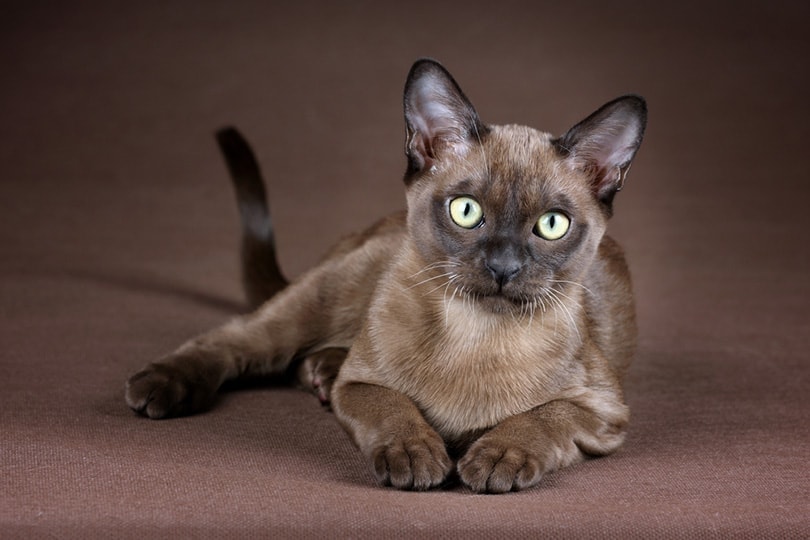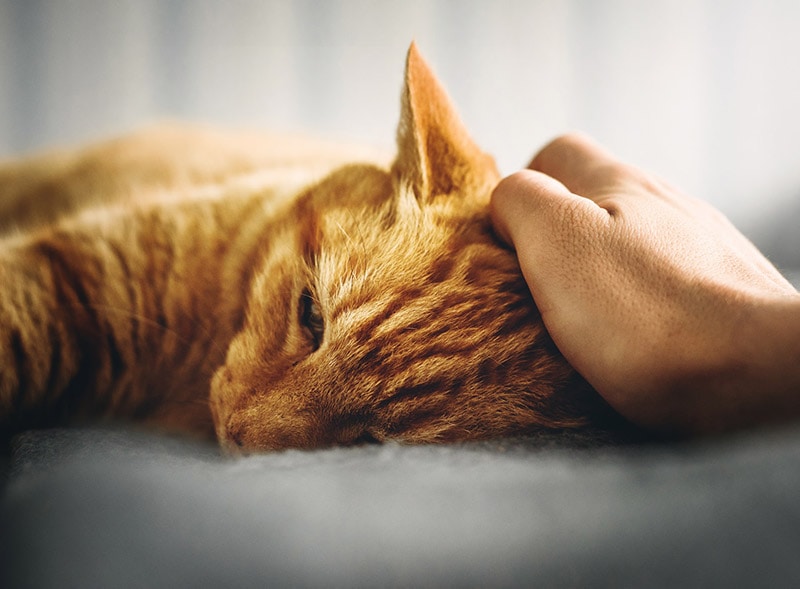7 Reasons Why Your Cat Is Kicking the Wall: The Interesting Answer!

Updated on
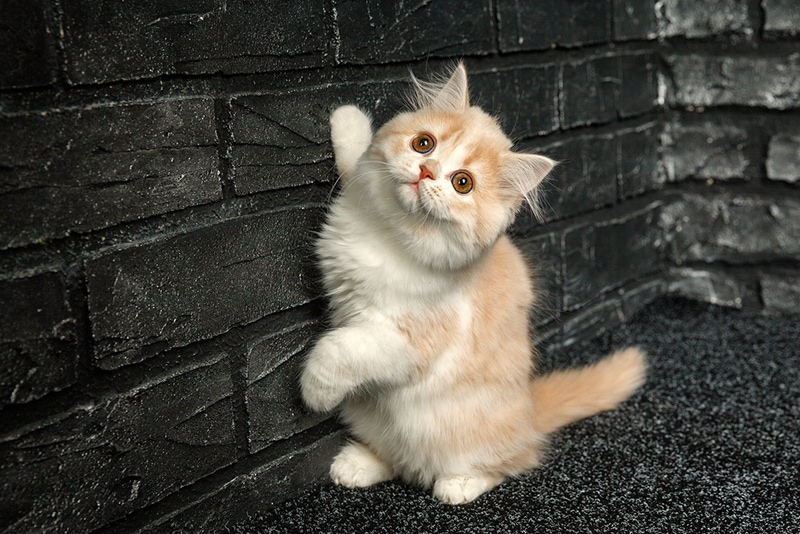
Does your cat often move toward the wall for a good kick? Do they kick at it with a quick thumping sound while playing with their favorite toy? Cats can seem like aloof and complex creatures, and wall-kicking behavior is definitely a strange one to display. But there are a few reasons why your cat might do this, as well as why they might kick their feet against other objects (like your arm). This article will examine seven reasons why your cat kicks the wall and other objects and what their kicking back legs could mean.
The 7 Reasons Why Cats Kick the Wall
1. They Are Marking
Cats communicate in various ways, including through sounds, body language, and pheromones. Cats have scent glands dotted all over their bodies and some powerful ones on their feet. These glands, called interdigital glands, sit between your cat’s toes and release pheromones when their claws are extended.
Stretching their legs out and kicking a wall (particularly at the corner) could mean that your cat is spreading some of this pheromone around the home, helping them feel happy and safe. The pheromone released from a cat’s pads when they kick helps them mark their territory, designating the space as their own to other potential cats and reassuring themselves. Providing them with a cat scratcher can protect your walls while providing your cat with the means to perform this important behavior.
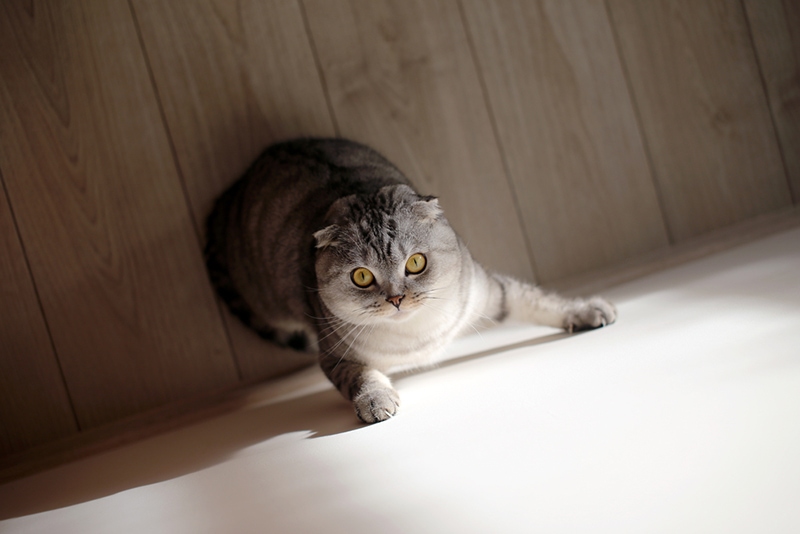
2. They’re Playing
Cats have a signature kicking “move” that can be hilarious to observe when they’re playing but not so funny when it involves the wall or your arm! “Bunny kicking” is the term used to describe this bizarre behavior, in which a cat will curl around something, such as a corner of a wall or a favorite toy, and kick at it in a bouncing motion with their back legs.
Bunny kicking comes in two forms: playfulness (like they’d play with their littermates as kittens) and aggression. It’s likely that if your cat is curled around the corner of a wall, bunny-kicking and biting it, it’s likely the play-kicking you’re seeing. However, sometimes a cat will kick hard and bite, possibly leaving gouges in the wall. This is likely aggression, and you can redirect it by offering (or throwing) your cat a toy that’s specifically designed to satisfy this type of play, such as a kicker.
3. They Need to Scratch
Cats need to scratch as part of innate behavior. Innate means that it is a behavior the animal must perform to be happy, and not doing so can cause them stress and even harm. Scratching is an innate behavior for cats, as it’s one of the main ways they mark their territory (along with spraying), and it also fulfills a physical need.
Cats also scratch to keep their claws well-filed and remove old claw sheaths to reveal fresh and sharp new claws beneath. Your cat might be kicking and scratching at the wall to remove these old sheaths. You can provide it with a vertically mounted cat scratcher to relieve this natural urge if they prefer a straight, flat surface to scratch on.
4. They have a Good Stretch
If you have sunny areas in the home, the chances are you’ve seen your cat stretch out on a warm surface in the sun to bask and relieve tension. Cats are the same as humans in that they suffer fatigue and pain in joints and muscles¹ when they’ve been inactive for some time. Some cats like to have a hard surface to stretch and arch their backs, like a wall.
5. There’s Something Stuck in Their Paws
If your cat is backing up onto your wall and is kicking and shaking their back legs wildly, it may have something stuck in its paws or between its toes. Some cats have tufts of hair between their toes that can be an easy place for debris (usually cat litter) to become stuck and very irritating for a cat.
Long-haired breeds such as Maine Coons and Norwegian Forest cats can have very long hair between their toes, meaning litter is often caught. Kicking and shaking their back legs or kicking them onto a wall can be one of the ways your cat tries to remove this debris, particularly smaller items like grains of litter that are harder to remove with regular grooming.
You can gently restrain your cat so you can look at its paws and between its pads to remove the offending object and check if a more severe injury has occurred. If your cat has inured itself, take them to a vet as soon as possible since paw pads are very sensitive, and an injury is likely to be painful.
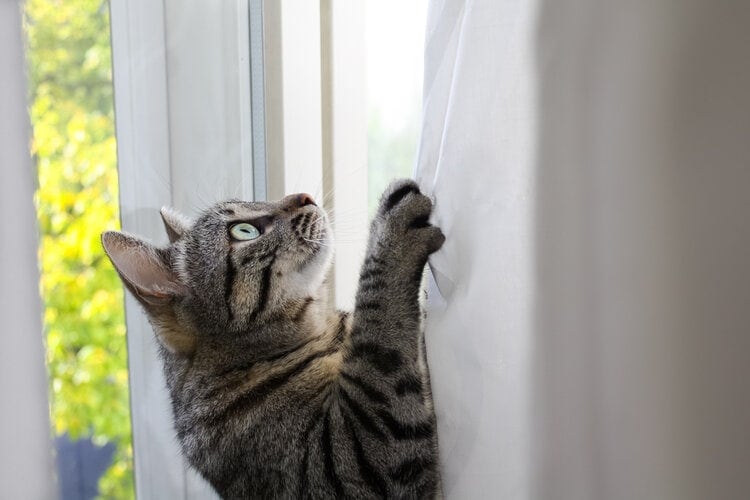
6. They Want Your Attention
Some cats crave their owner’s attention more than others and might get creative with how they try to get it. Some cats meow, some do cute tricks like patting their heads with their paws, and some will go on the hunt and bring their owner back “presents” of killed prey. One cat, however, learned to knock¹ on their owner’s door with their back feet to be let in! So, it’s not out of the realm of possibility that your cat is simply kicking the wall with their feet because they know it gets your attention.
If your cat did this by accident one day and you reacted to it (either positively or negatively), there’s a chance that they associated the kicking with the attention. They’ll use the kicking as a form of attention-seeking, and the best way to combat this is to ignore your cat when they do this.
7. They Have a Neurological Disorder
Sometimes, there might be more sinister reasons why your cat could be kicking the wall. Neurological disorders can cause a cat to perform bizarre behaviors due to degeneration of disease of the brain, spinal cord, and nervous system. One such disease is feline hyperesthesia (or twitchy cat syndrome), which is debated among veterinary professionals but is mainly seen as a seizure disorder or behavioral disorder caused by intense stress.
The primary signs of hyperesthesia are a characteristic “rolling” of the skin on the back, jumping and kicking, and frantic biting at the base of the tail. Another possible neurological cause for wall-kicking is any disease that causes muscle jerks or ataxia, such as seizure disorders (epilepsy) or nerve damage. If you notice any new or alarming behavior (including wall kicking), take your cat to the veterinarian as soon as possible so they can rule out any illness or disease. They can also advise you on your cat’s behavior.
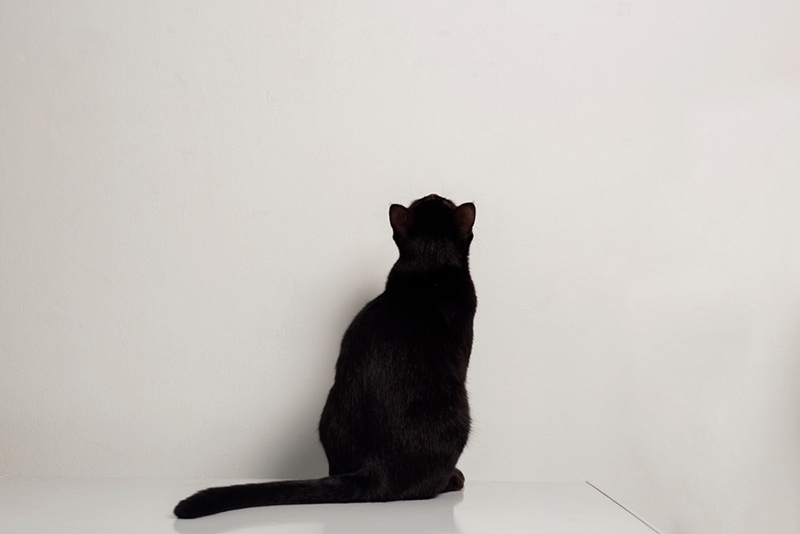
Why Does My Cat Kick My Arm?
If your cat happily plays with you and innocently rolls over to show their belly, this might seem like an invitation to stroke them there. While some cats will gladly allow their owners to stroke their tummies, many will instantly wrap their paws around their owner’s arms and bunny-kick them with their hind legs. This can be painful! The reason for this is twofold: for self-defense purposes and part of their hunting behavior.
A cat’s belly is one of its most sensitive areas. If they were defending territory from an aggressor (e.g., another cat), their belly is an area of soft skin and vulnerability. Lying on their side leaves them with all four paws and claws to defend themselves. When hunting, cats will use the bunny kick to keep their prey tightly within their grasp, and the movement and sharpness of their claws can finish the hunt quickly.
How Can I Stop My Cat From Kicking?
Stopping your cat from kicking will depend on the reason they’re doing so. Looking for body language that supersedes aggressive behaviors, such as dilated pupils and flattened ears, can help you anticipate an attack. Either stopping the play or giving your cat a toy to kick can stop them from hurting you. If your cat has a favorite spot they like to kick, trying a preventative like a repellant spray can help, as well as placing natural repellants like orange or lemon peel around the area.
If it’s scratching-related, finding a scratcher your cat likes is key to protecting your walls from their sharp claws. Vertical scratchers, horizontal scratches, or more traditional scratching posts are all good ideas, and you may have to try out a few to find out which suits your cat best.
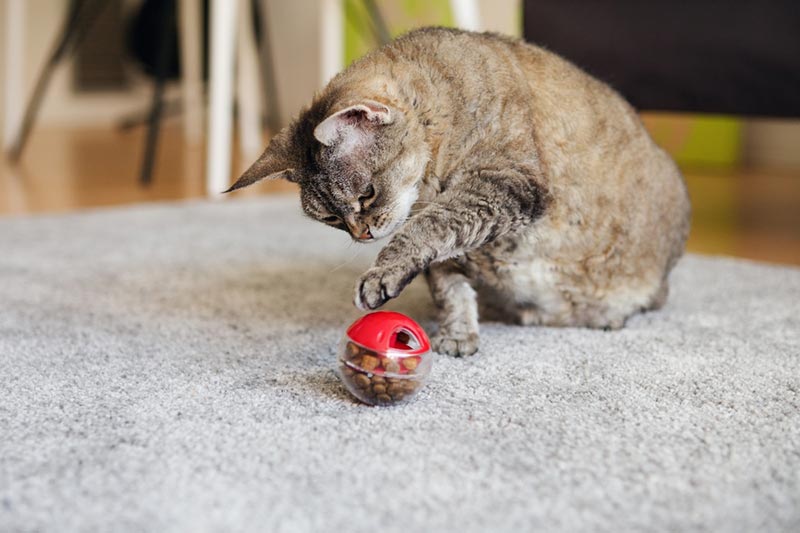
Conclusion
There are many reasons why your cat might decide to kick your wall. It can be random, purposeful, or opportunistic, but it can be frustrating for owners when they don’t know what’s causing it. We’ve explored seven possible reasons why your cat kicks your wall and looked at some ways of preventing this from happening. We hope you’ve found this article informative and helped you discover what’s going through your kitty’s head when they begin kicking at your wall.
See Also:
- Why Is Your Cat Trying to Climb the Walls? 8 Wild Reasons
- Why Does My Cat Slap My Dog? 3 Possible Reasons


